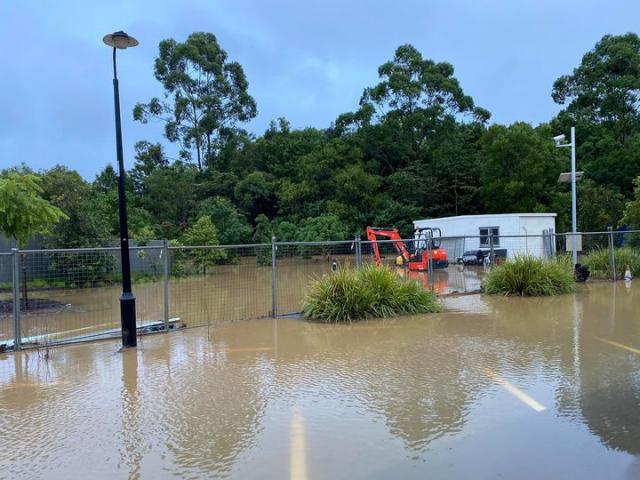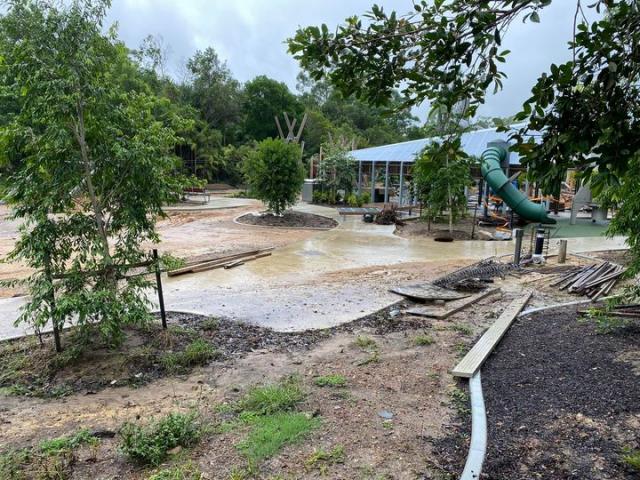In December 1981, Cooroy was hit by a drowning cluster which made the national news.
Four people were electrocuted in Cooroy Creek, just to the right of the Mary River Road bridge at the bottom of Maple Street. Unbeknownst to local residents living, nearby, power lines that had fallen into the water after a storm were live.
Looking for some adventure in this popular swimming hole, Derek Lange, 11, and Shayne Parker, 9, launched their homemade raft into the swollen creek. They died instantly when they grabbed hold of the wires. June Lange, 30, Derek’s mother, was electrocuted when she dived into the narrow creek to go to their aid. Ricky von Blankensee, 18, was also killed when he went into the water to help.
A Cooroy resident remembers: “It was devastating for everyone as they were a beautiful, well-known local family. The father worked as a supervisor at both the sawmills so was known by everyone and he was a fair and hard-working man who rarely had a bad word said about him. Parents and adults, who had to be restrained on the river banks while they watched, were left damaged for life.”
The electricity authority, SEQEB held an inquiry and recommendations included a review of safety and all power poles in the shire, regular inspection procedures, and new protocols for liaison with SES and all emergency services.
Works were undertaken to ensure such an accident never happened again, including filling in the water hole and building new power lines over the creek.
In June, 1982, Terrance Lange and George Parker became recipients of the Bravery Medal for the attempted rescue of the four people from the electrified creek.
Remembering the event
At the Cooroy Hinterland Playground External Reference Group, 28 September 2019, CARA received this reply from Council to a suggestion that Council allowed a memorial to the event in the playground.
Memorial plaques in the playground:
• Council’s policy on plaques is currently under review.
• Formal applications will not be addressed until the policy is adopted by Council, providing a set of criteria and a clear process.
• Challenges include the fact that some memorials may be significant to immediate families but not the wider community.
• Certain memorials may also make the lives of first responders difficult.
• Plaques within community spaces maybe applicable for persons who have made a significant contribution to the community.
Recently, Noosa Council rejected an application by the local newspaper, The Cooroy Rag, to erect a memorial plaque because, “it doesn’t meet the criteria of a significant historical or cultural event.”
The suggestion that this tragic event in Cooroy was not a significant cultural or historical event for the town is soundly rejected by the community.
On the Cooroy Community Noticeboard Facebook Page, over 180 residents agreed that a memorial plaque on a bench seat, adjacent to the place where the accident happened, would be most appropriate. There were no dissenting views.
Comments included: “Love it how all areas of government are trying to erase history as though it never existed. You can’t keep shielding people from the truth. People need to know about history, talk about it, question it and learn from it, not erase it altogether. What right do they have to ignore it.”
“Such a sad event and I remember it vividly. As long as the families agree, I think a memorial of some kind should be erected. It is part of the history of Cooroy and the resilience of the community.”
“That’s a very poor decision on the part of the Council. All I can say is shame on them, what a weak excuse, ‘it doesn’t meet the criteria of a significant historical or cultural event’. It was the loss of lives in a tragedy that touched all in the community at the time and for many since. I know I never go past the area, even now with the new playground being built, and not remember that sad day.”
Originally a timber town, by 1902 Cooroy consisted of a collection of huts and tents of timber workers clustered around the railway, and in 1907 the town was surveyed and the land opened for selection.
Fenwicks sawmill was built in 1908, and a school opened in 1909 with 67 pupils. The town flourished and dairying joined timber harvesting as a major industry. The Butter Factory, built in1915 to service surrounding dairy farms, closed in 1975, as the industry became unprofitable. The farms were subdivided into small residential blocks, and the town was revitalized with education, services and retail as its base. It has grown significantly in the past 10 years to become a vibrant hinterland hub.
Just last week floodwaters inundated the almost finished playground. It was a timely reminder that nature takes as much as it gives.
And it is certainly an appropriate time for those four townsfolk be properly remembered. They really are part of our history and their tragic story is etched in our culture.








